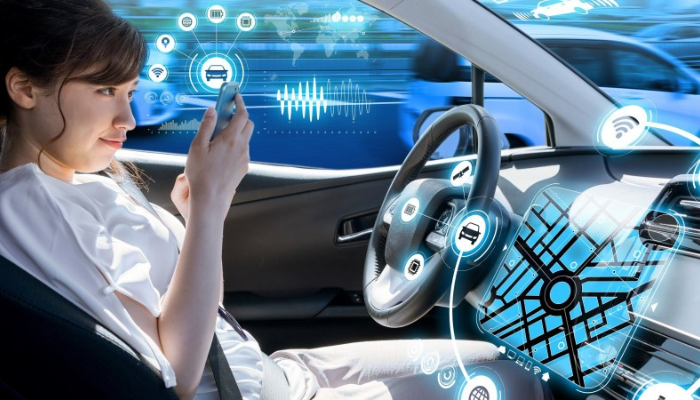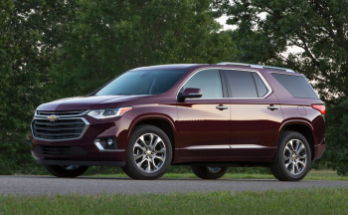Carmakers are rolling out advanced assisted driving features that allow drivers to take their hands off the wheel. They’re also working on ways to keep track of a driver’s health and alert them to potential problems.
Full self-driving vehicles are still a few years away. Until then, manufacturers have been experimenting with parking-assist technology that can search and pull into tight spaces.
Autonomous Vehicles
Autonomous vehicles are equipped with sensors that create and maintain a dynamic map of their environment, read road signs, track other cars, monitor pedestrians, detect lane markings, and much more. The system then combines the data generated by these systems to understand what’s happening around the vehicle and predict what it will do next. Autonomous passenger cars rely on cameras, radar, lidar (light detection and ranging), and ultrasonic sensors to monitor the surroundings and identify obstacles, all of which are constantly improving with over-the-air software updates.
The technology offers several benefits, including increased fuel efficiency by optimizing acceleration and deceleration and reducing overall driving patterns, as well as reduced emissions and dependence on fossil fuels. Autonomous vehicles also allow for ride-sharing and carpooling, further reducing the number of cars on the road.
These technologies have the potential to revolutionize the way we travel, lowering stress, traffic and congestion and making travel more sustainable. But they’re also raising a host of questions about work, human agency and ethics, from whether we’ll be ready to hand over control to a computer to what role humans should play in the event of an unavoidable accident.
Many traditional automakers are racing to boost ADAS offerings and develop fully autonomous vehicles. Self-driving cars will likely become commonplace once they’re proven in real-world conditions. This could put them at a competitive disadvantage to rivals, as well as impact transport-related sectors like insurance companies and car repair centres.
Electric Vehicles
Electric vehicles (EVs) are no longer a distant vision of the future. They have rapidly moved from a niche technology into the mainstream, driven by advancements that offer transformative benefits to consumers and society.
The EV market has expanded significantly in recent years, with sales rising by double-digit percentages in most significant markets. This trend is expected to continue as technology improves and prices decline further, with EVs approaching price parity with gasoline vehicles.
EVs can be divided into two categories: plug-in hybrid electric vehicles and battery EVs. Plug-in hybrids can run on both fuel and electricity, while battery EVs have a higher electricity driving range. Battery costs have declined over the last few years, and improvements in battery energy density and lifespan could further reduce these costs.
From a design perspective, cars of the future are likely to have more eye-catching and futuristic looks than ever before. Transparent materials could allow drivers to express themselves with designs that are uniquely their own or even change the vehicle’s appearance at will through augmented reality (AR). Head-up displays could convey information such as maps and navigation to the driver without requiring them to look away from the road.
Governments have been introducing incentives to promote EV use, including high-occupancy vehicle privileges and waiving emissions inspections. The increased adoption of EVs is expected to have positive impacts on air quality and oil consumption. However, the EV market needs to address concerns around space occupancy and traffic congestion.
Self-Driving Vehicles
The technology that most people are excited about in new cars is self-driving vehicles. This level of autonomy is referred to as full automation, and it has the potential to eliminate traffic jams, reduce the need for human drivers and make commutes more pleasant. It will also open up new mobility opportunities for disabled people.
Autonomous cars have three prominent electronic “eyes” that monitor their surroundings – radar, cameras and laser-based LiDAR (light detection and ranging). This data is fed into on-board processors, which use it to understand the car’s environment and then respond appropriately. The system uses neural networks and machine learning to identify things such as traffic lights, trees, street signs and pedestrians.
Government statistics cite driver behaviour or error as the cause of 94 per cent of crashes. Still, even with advanced driver-assistance systems like blind spot monitoring and lane departure warnings, these technologies can’t prevent all accidents. A higher level of autonomy, however, could change that by allowing people to work or relax while driving.
It will also reduce traffic jams and improve road capacity by reducing the need for human drivers to slow down or stop. With the ability of autonomous cars to communicate with each other using vehicle-to-vehicle communication, they can share information and drive in tandem over long distances, which is more fuel-efficient than individual commuting.
The Future of Parking
Until recently, parking was an intractable problem. Cities trained drivers to expect easy parking, which encouraged them to drive everywhere – and to demand more parking. This self-reinforcing loop of cars on the road fueled traffic congestion and greenhouse gas emissions. A study by Donald Shoup, an urban planning professor, found that driving around downtown areas looking for parking wastes 47,000 gallons of fuel and generates 730 tons of carbon dioxide every year.
To break the cycle, cities could start charging for parking spots. However, this approach has proved controversial — especially in places where the economy relies on local business. When San Francisco began to charge for parking on some blocks, people fought back, and merchants complained that their customers were leaving town.

Another option is to use innovative technology to make parking easier. For example, a car equipped with LiDAR sensors can detect obstacles that are in the way of its movement or visibility. Cars with this tech would also be able to communicate with other vehicles on the road and street signs to help reduce congestion and accidents.
Eventually, autonomous ride-sharing vehicles might replace traditional cars altogether. According to research from the University of Texas-Austin, a single robocar could take the place of up to a dozen regular vehicles. This means that cities will need 90 per cent fewer parking spaces.



